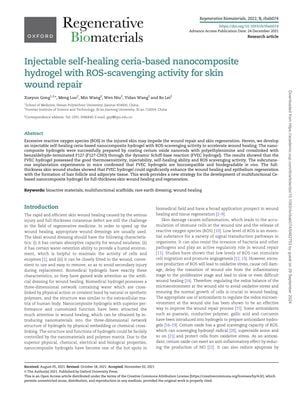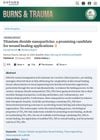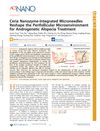Injectable Self-Healing Ceria-Based Nanocomposite Hydrogel with ROS-Scavenging Activity for Skin Wound Repair
December 2021
in “
Regenerative Biomaterials
”
ceria-based nanocomposite hydrogel ROS-scavenging activity wound healing cerium oxide nanorods polyethylenimine benzaldehyde-terminated F127 thermosensitivity injectability self-healing ability biocompatibility biodegradability epithelium regeneration hair follicles adipocyte tissue cerium oxide PEI F127 ROS self-healing hydrogel

TLDR The hydrogel speeds up skin wound healing and helps regenerate tissue.
The study developed an injectable self-healing ceria-based nanocomposite hydrogel (FVEC hydrogel) with ROS-scavenging activity to accelerate wound healing. The hydrogel, made by coating cerium oxide nanorods with polyethylenimine and crosslinking with benzaldehyde-terminated F127, demonstrated good thermosensitivity, injectability, self-healing ability, and ROS scavenging activity. Subcutaneous implantation in mice confirmed its biocompatibility and biodegradability. Full-thickness skin wound studies showed that the FVEC hydrogel significantly enhanced wound healing and epithelium regeneration, including the formation of hair follicles and adipocyte tissue, suggesting a promising strategy for multifunctional skin wound healing and regeneration.

